For Aliens in the Attic, director John Schultz called on Rhythm & Hues to create an array of cute-but-scary aliens who take on an unlikely band of vacationing kids. Visual effects supervisor Doug Smith and co-visual effects supervisor Mike O’Neal break down Rhythm’s alien animation work for fxguide.
fxg: What was the scope of the visual effects?
Doug Smith: Well, firstly the film was shot in Auckland, New Zealand but actually takes place at a vacation house in Michigan. Also, because of the way it was staged, the house had to be extended. The entire rooftop set was bluescreen and other rooms had to be extended where necessary. Then of course we had to create the aliens and all the associated effects, plus the Sizematron effects at the end of the film. We did some design work at Rhythm and then I supervised the shooting in New Zealand while O’Neal: ran things back at the studio.

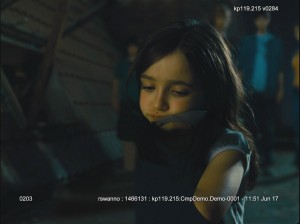
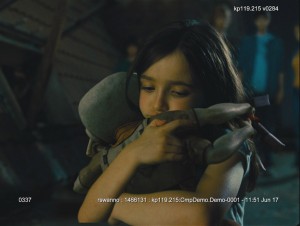

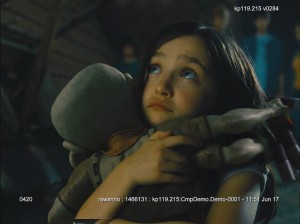
fxg: Can you take me through the design work for the aliens?
O’Neal: O’Neal: The aliens went through a huge evolution, as you can imagine. We started out with extra knees in the leg. They also went through various sizes. At one point they were more bird-like. At another point they were all naked – just skinned. We wanted to find the right balance of scary and alien but still cute and enjoyable and humorous. We went through all the different conceptual designs with traditional 2D and hand-drawn artwork to come up with looks for the characters.
Smith: It started with conceptual 2D work, but there are always a lot of surprises along the way when you go from 2D to 3D. You’ll see the aliens from different angles and things can look strange or out of proportion. So we did some sculpts of the aliens. Once the sculpting was approved, those were scanned in. Then the modeling and rigging could start, including for their clothing, tools and weapons.
fxg: What kind of controls did you have for making the aliens speak?
O’Neal:: Originally they weren’t supposed to speak English so we had a language that was very simple for their jaw structure. Then part-way through production this changed so we had to re-design their jaws to be able to make human phonemes, which required a lot more motion because their faces are very big and very wide, and weren’t really designed to make ‘Oooo’ sounds, for example. But they needed to, so we did some re-design to be able to make their skin stretch but not look like it was.
fxg: How did you accomplish the look for the alien skin?
O’Neal:: We had done a lot of skin development for The Incredible Hulk, so we drew on that for the skin of these aliens. We wanted them to look real and kind of creepy, but not too creepy. We tried to keep the big eyes and nice faces, with lots of granular wrinkles on the sides of their heads. This involved adding layers and layers of texture maps, making sure the sub-surface scattering was looking right, making sure it moved properly and stretched properly.
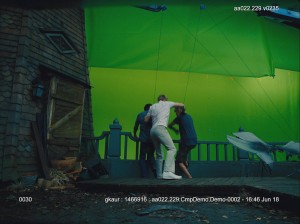


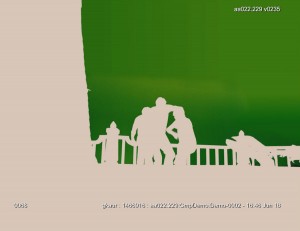
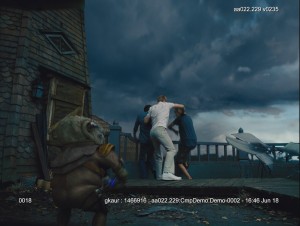
fxg: Doug, can you talk about some of the on-set shooting challenges, given that you would be adding in the aliens later on?
Smith: Well, it turned out that the youngest girl in the cast, Ashley Boettcher, had the most fantastic imagination. She had no problem at all imagining what was going to be put in there later digitally. We did have some casts from the main sculptings because we wanted a detailed physical creature to sit in the scene. If it had to move around the scene a lot then we had these very simple stuffies which were simple shapes with blobby arms and a belly and a head, with no facial expression at all. The stuffie became Ashley’s friend and she actually asked multiple times to take it home with her. Her double would also walk around holding it. She had some quite emotional scenes with a character called Sparks. She had to give him a goodbye hug and on set with the stuffie there were tears in her eyes.
fxg: Did you use a lot of HDRI on set?
Smith: Yes. We use an HDRI camera that was specially built by Rhythm & Hues. It’s a cube-shaped camera with a lens on each side of the cube, which measures five inches on each side, so it’s fairy small. It mounts on a tripod on the corner of the cube. The HDRI camera takes a series of exposures that go from the deepest blacks to the brightest highlights and get the colour information out of the scene in a wide exposure – what we call a wedge. In addition to that, we use a chrome and gray ball pass.
Then we try to shoot some sort of reference of the characters so we can see how the light falls on them and how deep the shadows are and what the contact shadows are like. If there are bright reflections in the room that are going to have shadows cast on them by a creature we try to do another pass and remove some of those highlights, because if you just try to darken the highlights it just turns grey and you need the information behind it in order to put a shadow over it. If the creature’s handling an object, we try to film that through the scene for all the right lighting.
fxg: What were some of the other on set considerations?
Smith: The days are usually very tightly scheduled, so you’re limited in how much you can ask the production crew to shoot for you. You just have to juggle what you can get, or what you can steal from another shot you’ve already done. We also have an on-set person who surveys the set. When we were working at the house, they measured the distance between things. The trackers get that information so they know what the distance is between chairs and other objects in the room. Or even how big the floorboards are. T
he person also takes stills of the setup and even videotape if there’s something unusual going on on the set, so that the tracker and the other people can understand how the shot was constructed and why the camera’s moving like it is. The camera might not just be moving forward, it might be also swinging on an arm and the arm is going in a different direction. Another reason to videotape stuff is that there’s a lot of lighting effects going on. You can videotape the lighting rig that’s actually doing the lighting changes so that the lighters can see what was happening with the gels, for example.
fxg: Let’s talk about some specific shots. There’s a great sequence of the aliens in the heating vent when the kids throw in some fire crackers – how was that done?
O’Neal:: The heating vent sequence was all CG. We had these alien characters crammed in a limited environment, but we were able to have vents where we wanted so shafts of light could come in and dramatically fill the scene. Because it was CG, we had to create our own lighting environments by running little CG cameras through the environment to light them so that they’d appear as they do in the practical scenes.
fxg: There’s also a fun video-game inspired fight between Nanna (Doris Roberts) and Ricky (Robert Hoff) in the film. Can you talk about how that was shot?
Smith: Well, just remember that Doris is 84 years old and Robert is 18. There’s a lot of wire work, so they moved that onto a stage. An action director, John Mahaffie, helped design and photograph the sequence. They had to do it in such a way that it was shot out of sequence because in order to have the rigs travel through the set the way they wanted they had to dismantle the set as they were going. So they built a large set and then shot what they could looking at certain walls. Then they would go onto the next part of the sequence and remove a wall and chop down part of the ceiling, and so on. There’s a couple of face replacements in there done by CIS Vancouver. Most of the set extension work was also done by them.
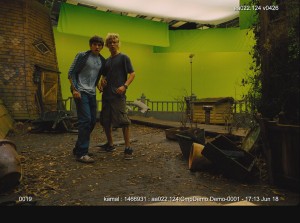
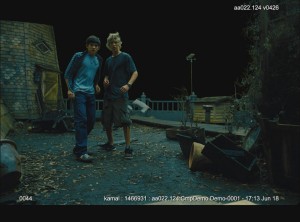
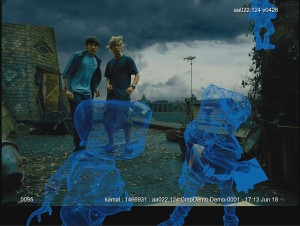
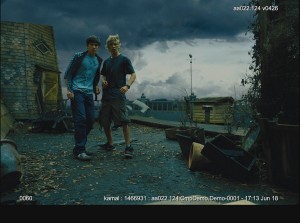
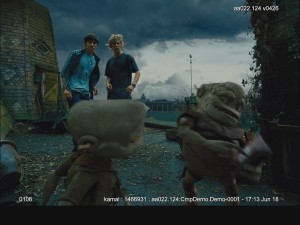
fxg: What about the anti-gravity sequence, which has the kids and aliens upside down?
Smith: There’s some interesting effects in there because one of the kids uses a fire extinguisher to propel him through the air and the gas from the extinguisher is CG effects work. They built an upside-down set and they filmed it with an upside-down camera. So when you look at it on screen, you see that their clothes and hair are floating upwards. This involved a huge amount of rig removal – cables and wires and harnesses and trapeze – with sometimes up to four kids and furniture floating in the air. It was also just a practical problem with all these kids hanging and their heads pointed toward the floor. In the real world their feet are above their heads and their heads are toward the floor. There were just some pure physical issues with the blood rushing to their heads.
They had to send a high speed camera through the set so they shot it over-cranked to give it a little more of a weightless feel. And anything with motion they had to move extra fast. The cable company, Velocity, out of Vancouver have a very sophisticated multi-point pick system that can be used to guide the camera around or fly people through the scene. Those shots took a long time to get all the kids rigged and resolve the cable problems, and also make sure everything’s safe.
O’Neal:: It was a pretty ambitious sequence – all the rigging, the fire extinguisher, integrating characters, having them shadow the kids and other parts of the set. The smoke had to shadow the characters, form ice residue on the characters, have continuity of melting ice from scene to scene. For the fire extinguisher we did some particle simulations in Houdini and some in our in-house fluid sim. I think this was an example of just making the effects work for a particular scene. Another shot we did had one of the aliens coming out of a toilet and for that we had to do some water simulation.
fxg: I think it’s a fun film and the animated performances definitely reflect that. How did you bring life to the aliens?
Smith: The process of getting a nuanced performance is extremely tricky, trying to make CG creatures have an inner life. In my earlier career, I never appreciated all the acting issues that were involved in this sort of work. So the process of integrating the animation and the visual effects is really tied into the storyline and tied into how the movie is cut together. You can’t animate one shot without understanding how it connects with the next five shots, and how the previous four shots got you there. There’s a lot of people during our review process – the director or whoever it might be – who try to guide the characters and keep them operating within their parameters.
It makes me a better filmmaker, I think, because it makes me understand the character arc better. If I’d worked on these kinds of movies a couple of decades ago, I would have been a much more thorough movie-maker. My background was as a visual effects cameraman and doing a lot of motion control. I knew about how to animate objects and how to tell the story as far as storyboards go. But as far as the nuanced movement of someone’s lower lids of their eyes opening partially and how the arms are positioned when it gets to frame 520 because at frame 530 the actor shows up and the arm has to hit a certain point – it is just a whole different level of communication and problem solving.
You are working on individual personalities in the story and you’re working in extremely detailed ways. These shots are expensive to do, so every shot has to be there to tell part of the story. If it doesn’t advance your understanding of the characters and the telling of the story, it should be removed and probably shouldn’t be there in the first place. Within every shot that is like that, every frame also needs to advance the storytelling and get you to the next shot. So it takes a lot of reviews and concentration on nuanced issues.
Interview by Ian Failes
